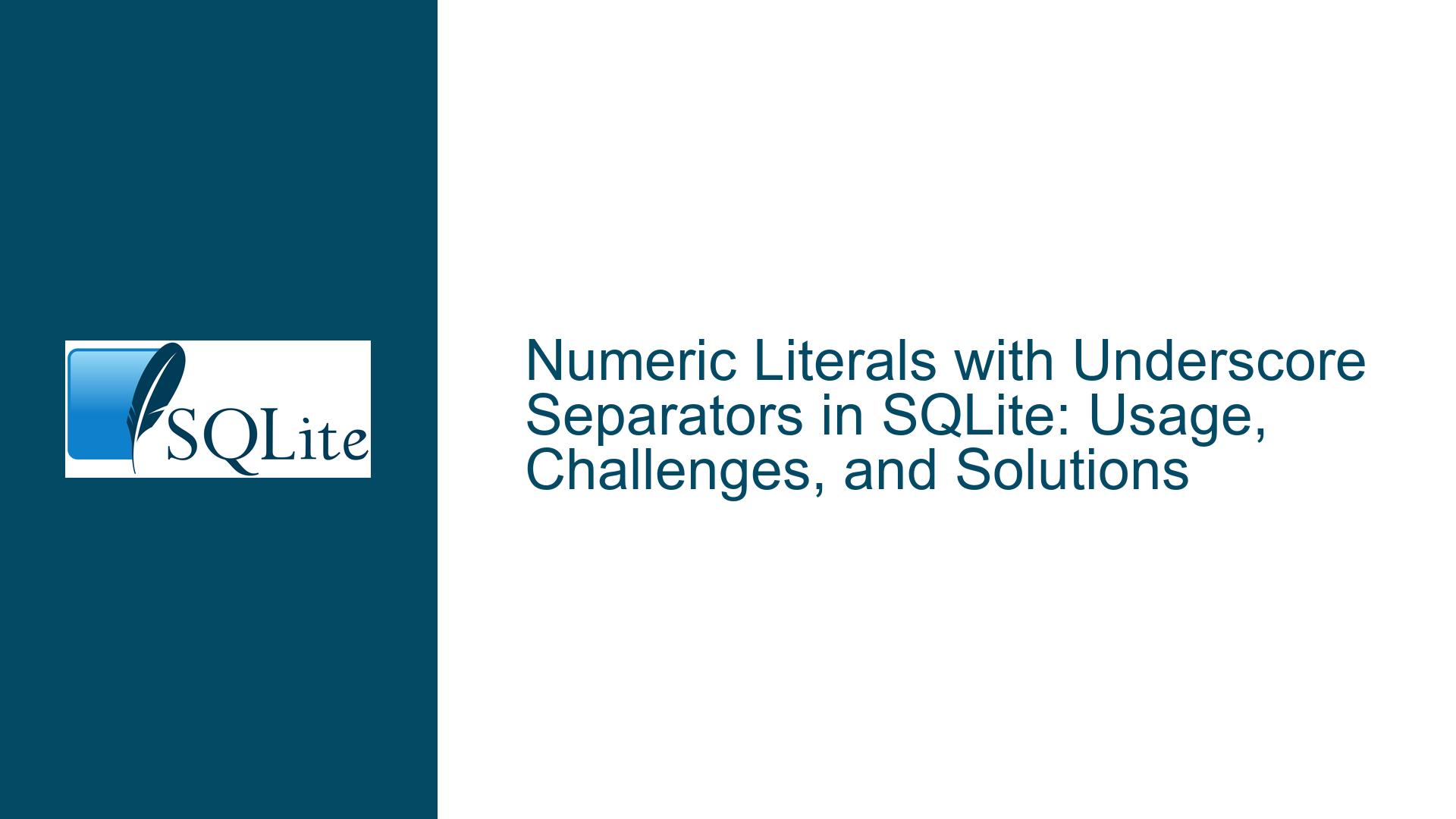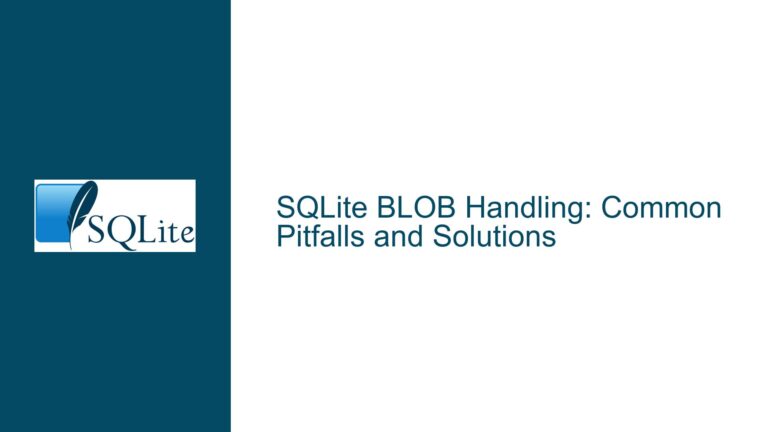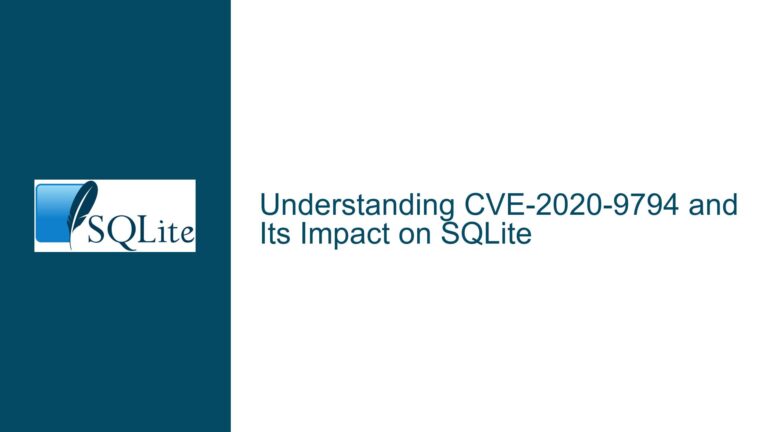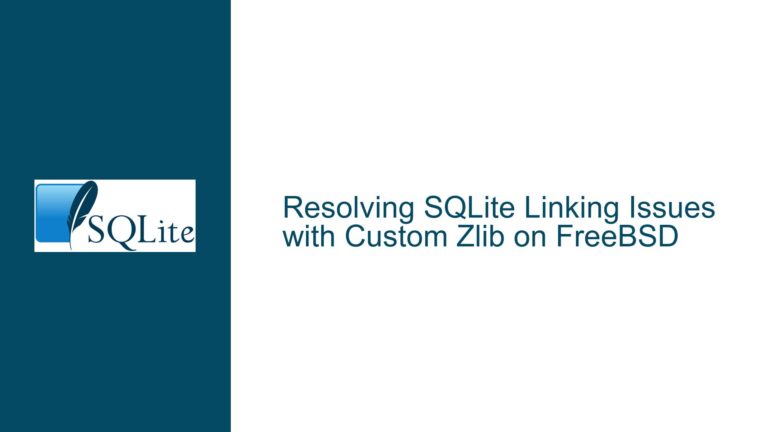Numeric Literals with Underscore Separators in SQLite: Usage, Challenges, and Solutions
Understanding the Role of Underscore Separators in Numeric Literals
Numeric literals with underscore separators are a syntactic feature that enhances the readability of large numbers or complex numeric representations in programming languages and databases. The primary purpose of underscore separators is to allow developers to group digits in a way that makes the magnitude or structure of a number immediately apparent. For example, the number 1000000 can be written as 1_000_000, making it clear that the number represents one million. This feature is particularly useful in contexts where numeric literals are long, such as hexadecimal, binary, or large decimal numbers.
In SQLite, numeric literals are traditionally written without any separators. However, as modern programming languages and databases like PostgreSQL adopt this feature, there is a growing demand for SQLite to support underscore separators in numeric literals. This demand stems from the need for consistency across tools and improved code readability, especially in applications where SQLite is embedded or used alongside other systems.
The implementation of underscore separators in numeric literals involves several considerations. First, the syntax must be unambiguous. For instance, underscores should not be allowed at the beginning or end of a numeric literal, nor should they be repeated consecutively. These rules ensure that the separators serve their purpose without introducing confusion or parsing errors. Second, the feature must integrate seamlessly with SQLite’s existing numeric handling, including arithmetic operations, type conversions, and storage.
Challenges in Implementing Underscore Separators in SQLite
One of the main challenges in implementing underscore separators in SQLite is ensuring backward compatibility. SQLite is widely used in embedded systems, mobile applications, and legacy software, where changes to the syntax or behavior of numeric literals could break existing code. For example, a query that previously interpreted 1_000 as a valid numeric literal might fail if underscores are introduced as separators. Therefore, any implementation must carefully balance new functionality with the need to maintain compatibility.
Another challenge is defining the rules for underscore placement. As seen in other languages and databases, underscores cannot appear at the start or end of a numeric literal, nor can they be repeated consecutively. These rules prevent ambiguous or invalid syntax, such as _100 or 1__000. However, enforcing these rules requires modifications to SQLite’s lexical analyzer and parser, which must now recognize underscores as valid characters within numeric literals while rejecting invalid placements.
Additionally, the handling of underscore separators in different numeric bases (decimal, hexadecimal, binary) introduces complexity. For example, in hexadecimal literals, underscores might be used to separate bytes or words, as in 0x12_34_56_78. Similarly, in binary literals, underscores could group bits, as in 0b1010_1010. Each base requires specific rules for underscore placement, and these rules must be consistently applied across all numeric types.
Solutions and Best Practices for Using Underscore Separators in SQLite
To address the challenges of implementing underscore separators in SQLite, several solutions and best practices can be adopted. First, the syntax rules for underscore placement should be clearly defined and documented. For example, underscores should be allowed only between digits and should not appear at the start or end of a numeric literal. Consecutive underscores should also be prohibited to avoid ambiguity. These rules ensure that the feature enhances readability without introducing parsing errors.
Second, the implementation should include robust error handling to detect and report invalid underscore placements. For instance, if a user attempts to use an underscore at the start of a numeric literal, SQLite should generate a clear error message indicating the invalid syntax. This approach helps developers quickly identify and correct mistakes, reducing the risk of runtime errors.
Third, the feature should be thoroughly tested across different numeric bases and use cases. This includes testing decimal, hexadecimal, and binary literals with various underscore placements to ensure consistent behavior. For example, a test case might verify that 1_000_000 is correctly interpreted as one million, while 0x12_34_56_78 is correctly interpreted as a hexadecimal value. Testing should also cover edge cases, such as the maximum allowed number of digits and the handling of leading zeros.
Finally, the implementation should consider performance implications. While underscore separators primarily affect readability, their introduction could impact the parsing speed of numeric literals, especially in queries involving large datasets. To mitigate this, the lexical analyzer and parser should be optimized to handle underscores efficiently, minimizing any overhead.
In conclusion, the adoption of underscore separators in SQLite numeric literals offers significant benefits in terms of readability and consistency with modern programming languages and databases. However, implementing this feature requires careful consideration of syntax rules, error handling, testing, and performance. By addressing these challenges and following best practices, SQLite can successfully integrate underscore separators, enhancing its usability and appeal to developers.






